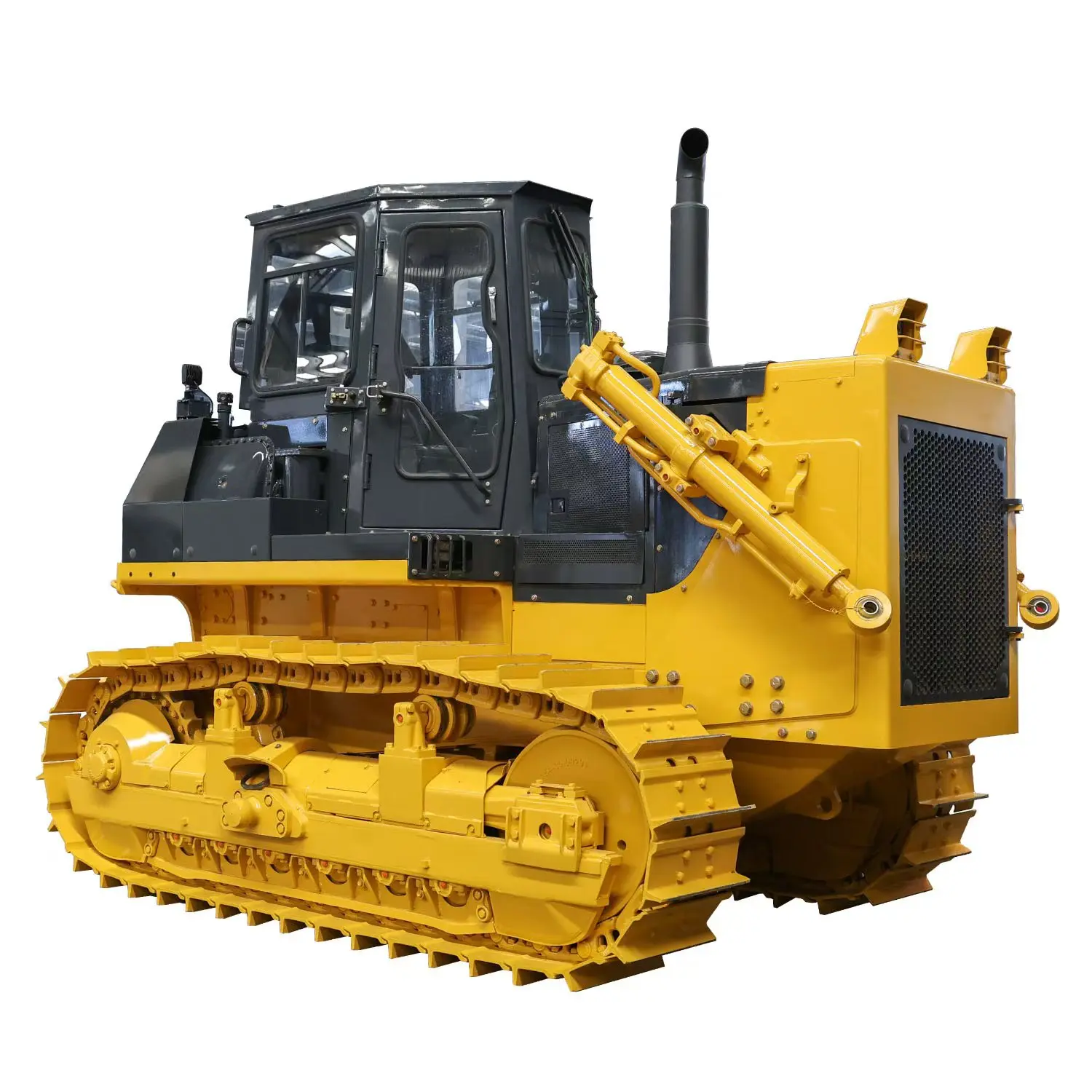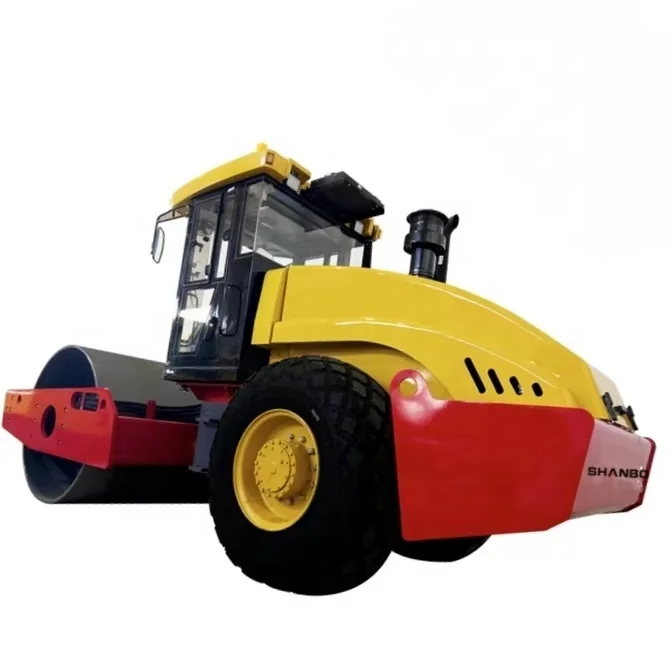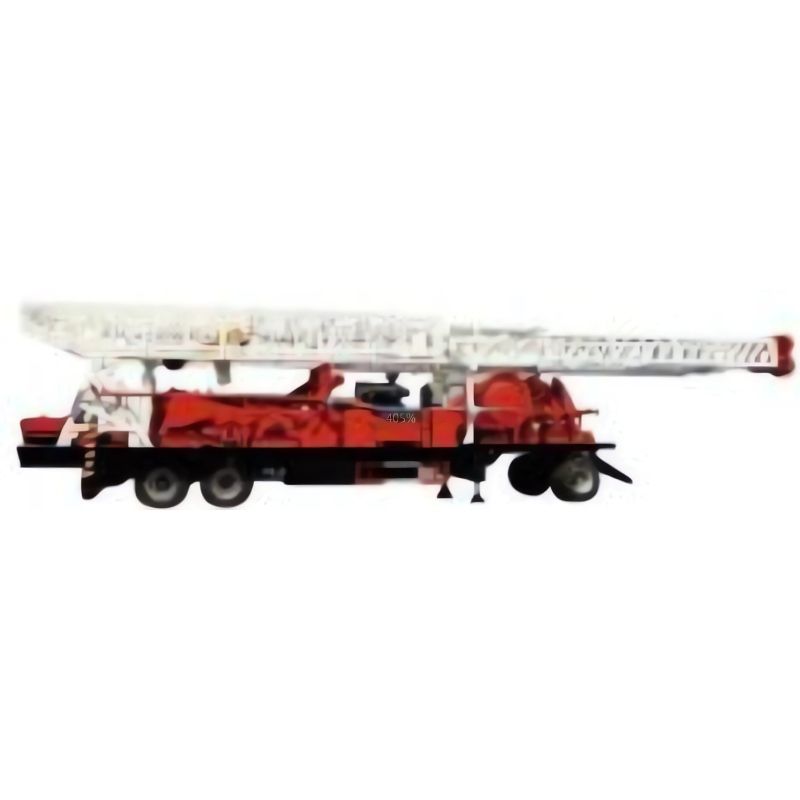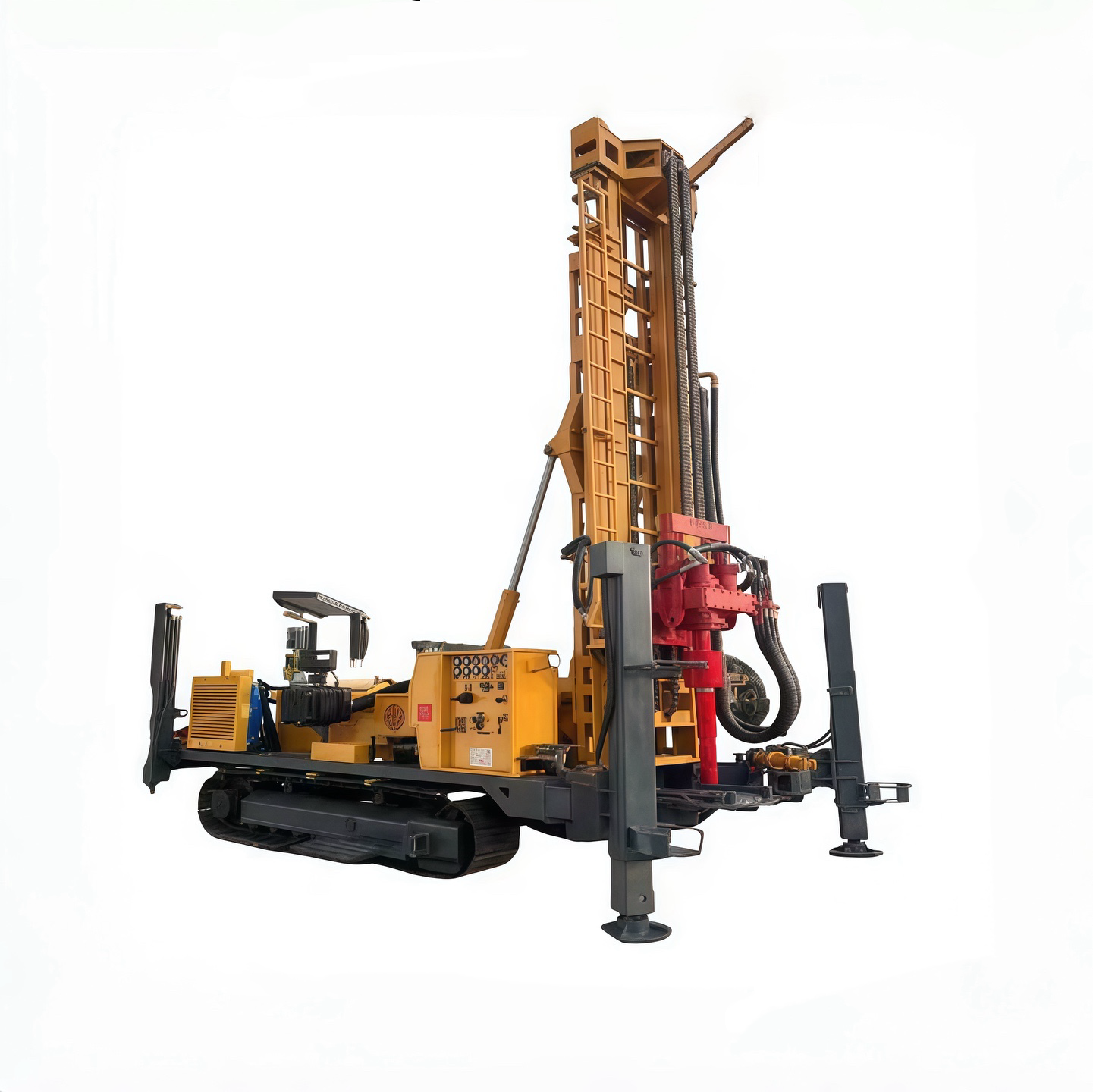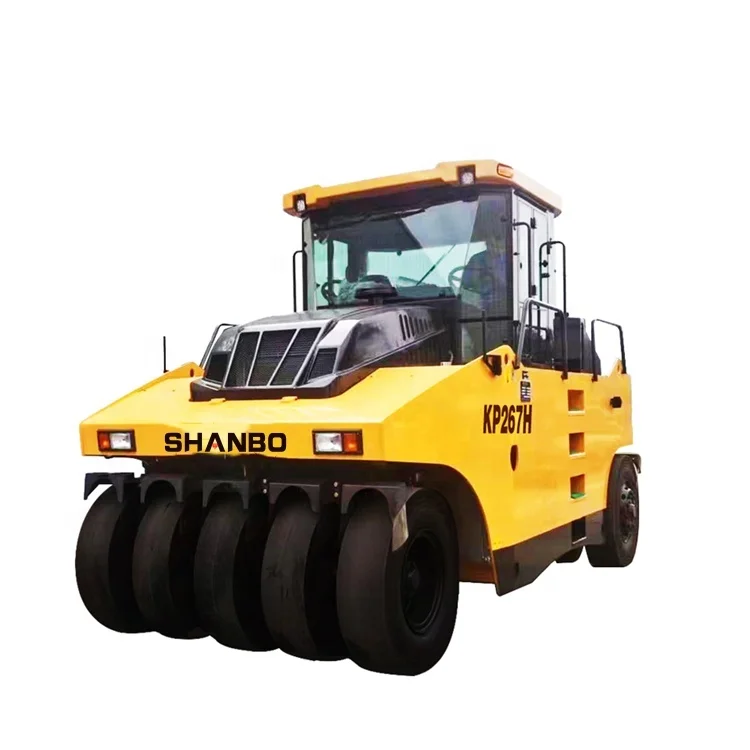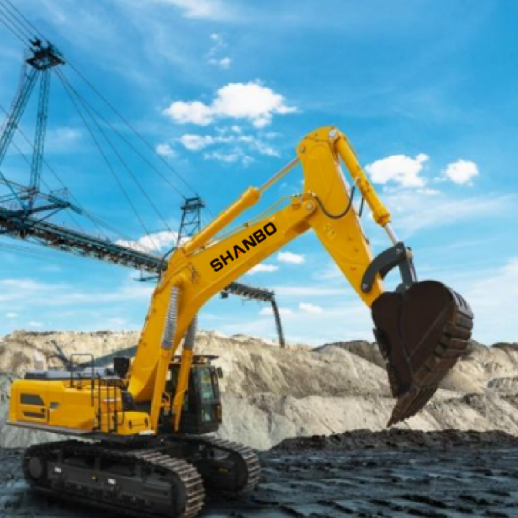The Role of Construction Equipment Parts in Ensuring Operational Efficiency
Essential Construction Equipment Parts for Machinery Performance
Critical Bulldozer Components for Earthmoving Efficiency
How well a bulldozer moves earth really depends on three main parts working together: the blade, tracks, and engine power. Blades come in different shapes depending on what job needs doing, letting operators push or spread material exactly where it should go. The tracks themselves make all the difference when moving through rough ground conditions, gripping whatever surface they encounter without getting stuck. And then there's that big engine under the hood which gives the machine enough punch to tackle tough jobs day after day. When everything works as intended, this combination delivers serious digging power that construction crews rely on for those demanding earthmoving projects.
Upgrading bulldozer components translates into substantial performance improvements. According to industry studies, modernized engines can increase fuel efficiency by up to 20%, while advanced blade designs contribute to a 15% improvement in material handling speed. Such enhancements not only boost productivity but also reduce operational costs in the long run.
Maintenance is crucial to keeping these components functioning at peak performance. Construction machinery specialists emphasize regular inspections and timely replacements of worn parts to prevent costly downtimes. Effective maintenance practices ensure that each component contributes to the bulldozer's overall operational excellence and longevity.
Excavator Hydraulic Systems: Powering Precision Operations
The hydraulic system is what makes an excavator tick, giving it that muscle and finesse needed for all sorts of digging jobs around construction sites. Pumps, cylinders, those little valves too, they all team up behind the scenes to give operators real control over their machines while still packing plenty of punch when needed. With this setup, operators can tackle tricky maneuvers without breaking a sweat, which means projects get done faster and cleaner than ever before on job sites across town.
Advancements in hydraulic technology have further enhanced excavator operations. Case studies demonstrate that modern hydraulic systems offer improved fluid flow management and reduced energy consumption. These innovations help excavators achieve remarkable efficiency and precision, setting new standards in the industry.
Moreover, modern hydraulic systems consider environmental implications as well. The use of eco-friendly hydraulic fluids and efficiency improvements minimize leaks and reduce emissions. These advancements support sustainable practices in construction, reflecting a commitment to environmental responsibility.
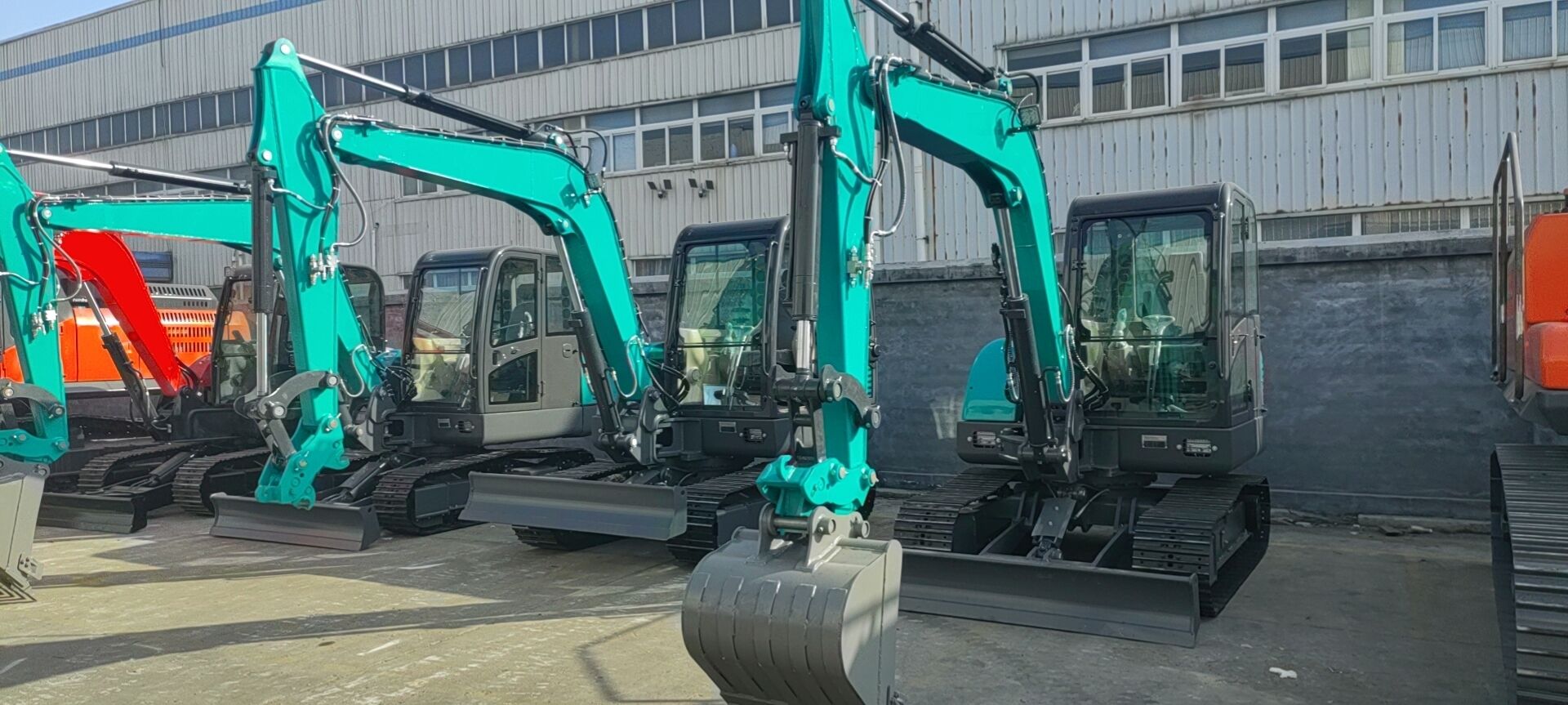
Drilling Rig Parts: Ensuring Consistent Performance in Well Drilling
Drilling rigs consist of several important parts including the drill bit itself, the rotary table, and those big mud pumps we always see running on site. Each part plays a critical role when it comes to successfully boring into the ground for wells. The drill bit does all the hard work of breaking through rock layers below the surface. Meanwhile, the rotary table keeps things spinning so the bit can keep going deeper. And let's not forget about those mud pumps either they circulate drilling fluid throughout the system which helps stabilize everything while also making sure the whole operation runs smoothly without getting bogged down.
The quality of drilling rig components strongly correlates with successful drilling outcomes. Statistics show that high-quality parts can improve drilling performance by up to 30%, as they reduce downtime and increase operational reliability. Ensuring the use of reliable components is paramount for achieving consistent drilling results.
Technological innovations continue to advance drilling rig performance. Industry forecasts predict continual enhancements, such as smart monitoring systems and advanced materials, which promise to further boost drilling efficiency. Embracing these innovations positions companies for future success in the ever-evolving realm of well drilling.
How Equipment Parts Influence Operational Efficiency Metrics
Fuel Efficiency and Engine Component Relationships
The heart of fuel efficiency in construction equipment lies in its engine components, which directly impact how well machines perform and what they cost to run day after day. Parts like fuel injectors, turbochargers, and intercoolers all play their part in making sure fuel gets used efficiently throughout the system. Take turbochargers specifically they actually improve engine performance by squeezing more air into the combustion chamber, allowing engines to burn fuel more completely. Research shows that when companies focus on getting these components right, they often see around 10 to 15 percent better fuel economy across their fleet. That kind of savings matters a lot in sectors where big machines are constantly at work. With stricter emissions rules coming down from regulators everywhere, equipment makers have been busy developing new tech solutions to keep their products compliant while still delivering strong performance on site.
Undercarriage Components Impact on Mobility and Productivity
The undercarriage parts such as tracks and rollers play a critical role in how construction machines move around and get work done efficiently. These components spread out the heavy weight of the machinery across different ground surfaces, which helps keep things stable even when working on rough or uneven terrain. According to those who know this stuff inside out, keeping these undercarriage elements in good condition really boosts productivity levels while cutting down on unexpected breakdowns and expensive repairs. Maintenance routines should include regular checks and applying lubricants where needed to keep everything running smoothly. When operators take care of their undercarriages properly, they not only prolong the lifespan of their expensive equipment but also see better results at the worksite with fewer interruptions and lower overall expenses in the long run.
Telematics Systems: Monitoring Parts Performance in Real-Time
The way construction equipment parts get monitored is changing thanks to telematics systems that give instant data about how machines are performing. When GPS and IoT tech come together in these systems, they allow detailed checks on what's going on inside the machinery. This means mechanics can spot problems early and fix them before something breaks down completely. Imagine a bulldozer starting to vibrate strangely or showing signs of a coolant leak. The system picks this up and sends a warning to the operator so action can be taken right away. Looking ahead, many experts believe AI improvements will take telematics even further. Construction companies already see value in these systems for keeping track of maintenance schedules accurately. Some firms report cutting downtime by nearly 30% after implementing proper telematics solutions across their fleet.
Telematics Revolution in Parts Management and Maintenance
Predictive Maintenance Through Component Monitoring
Construction equipment is getting smarter thanks to predictive maintenance techniques that monitor parts closely, extending how long machines last before needing repairs. The idea works by constantly gathering information and analyzing it so problems can be spotted before they cause breakdowns. Take excavators for example these days they come equipped with all sorts of sensors that track everything from engine temperature to wear on hydraulic cylinders. Some field reports suggest companies see around a 20% drop in downtime when they switch to this method, plus about 25% savings on repair bills over time. Looking ahead, we're likely going to see even better systems where AI starts making predictions automatically based on historical data patterns, which means operators might not need to check as much manually anymore.
Reducing Fuel Waste via Idle-Time Tracking Systems
Tracking idle time is an important tool for construction vehicle operators looking to cut down on wasted fuel while making operations run better. When companies know exactly how long their equipment sits idle between tasks, they spot where money is going out the window through excess fuel burn. Some field tests indicate these tracking systems can knock around 15 percent off fuel bills at worksites over several months. For instance, one contractor reported cutting monthly diesel costs by nearly $4,000 after installing the system across their fleet. These kinds of savings aren't just good for the bottom line either they help reduce environmental impact too, showing that smart tech applications really do make a difference in day to day operations across the industry.
Geofencing Technology for Enhanced Parts Security
The use of geofencing tech has really changed how we protect construction gear against theft these days. When contractors set up invisible digital fences around their worksites or storage yards, they get automatic warnings whenever any machine crosses those boundaries. This gives them time to react before something gets stolen. According to industry reports, companies implementing geofencing systems often see around 30% fewer theft incidents. That makes sense when looking at what happens on actual job sites where heavy machinery costs tens of thousands each piece. Better security means less downtime waiting for replacements and lower insurance claims over time. Most contractors now consider geofencing essential alongside traditional locks and alarms since it adds another layer of defense without requiring constant manual monitoring.
Eco-Friendly Innovations in Equipment Parts Design
Electric Motor Components in Compact Excavators
Putting electric motors into compact excavators is really changing how green construction works these days. When we look at old school diesel machines versus their electric cousins, there's no contest on the environment front. Electric models cut down on those nasty greenhouse gases and make way less noise around job sites too. A recent report from California actually showed something pretty impressive electric excavators slash emissions during operation by almost half compared to what diesel machines put out. That kind of difference matters when companies want to shrink their carbon footprint without sacrificing performance on site.
Biocomposite Materials for Sustainable Parts Manufacturing
Biocomposite materials are becoming increasingly important in making construction equipment parts more sustainable. Made from natural fibers combined with plant-based resins, these alternatives actually hold up pretty well compared to what we've been using traditionally. Many manufacturers report that their performance stands up just fine against standard materials across different construction settings. Switching to biocomposites cuts down on pollution during production while at the same time helping companies build better reputations among eco-minded consumers who notice when businesses genuinely care about green practices. We're starting to see brands that jump on this bandwagon gain stronger customer relationships and find themselves ahead of competitors in markets where environmental responsibility matters most to buyers.
Hybrid Systems: Balancing Power and Emissions Reduction
The shift to hybrid systems in construction gear marks real progress when it comes to getting enough power while keeping emissions down. Most of these setups mix electric motors with standard diesel engines, which helps save on fuel and cuts down pollution at the same time. According to field tests run by several major manufacturers, machines with hybrid tech tend to slash emissions around 30% compared to old school diesel models. Beyond helping clean up the air, this kind of efficiency actually saves money too as companies replace older equipment. The market for hybrid construction tech has been growing steadily lately, especially among contractors who want to meet green building standards without sacrificing productivity. Looking ahead, many experts believe these hybrid solutions will be essential for construction firms trying to hit increasingly strict environmental targets across different regions.
Strategic Parts Replacement for Minimizing Downtime
Preventive vs Predictive Maintenance Approaches
Getting the difference between preventive and predictive maintenance matters a lot when it comes to making parts last longer and keeping machines running smoothly. With preventive maintenance, companies stick to fixed schedules for checking, fixing, or swapping out components. This approach works well for many basic operations where breakdowns can be predicted based on time rather than condition. On the flip side, predictive maintenance looks at live data from sensors and uses smart analysis tools to spot potential problems early on. Instead of waiting for something to break down, technicians get alerts about issues before they actually happen. This means less unexpected stoppages and better overall efficiency across manufacturing floors.
Many experts argue that predictive maintenance can provide more significant advantages under operational scenarios requiring high reliability and efficiency. Predictive methods often utilize sensors and IoT technologies to monitor the condition of equipment continuously, thus predicting wear and potential failures more accurately.
Looking at actual implementations shows that both approaches work pretty well in practice. Take this big construction firm that started doing regular maintenance checks on all their bulldozers before any problems showed up. This kept things running smoothly during a huge infrastructure project that lasted several years straight. Another interesting case comes from a company making those deep water drilling rigs. They switched to monitoring systems that predict when parts might fail instead of just fixing things after breakdowns. The result? About 20 percent less time sitting idle waiting for repairs, plus their machines lasted much longer than expected. Makes sense really because catching issues early saves money in the long run.
Oil Analysis and Wear Detection Techniques
Oil analysis is really important for spotting when equipment might fail and catching wear on parts before it becomes a big problem. It helps reduce downtime at work sites. When companies check oil samples on a regular basis, they get to see what shape their lubricants are in. This lets them catch problems early like dirt getting into the system or tiny bits of metal floating around that signal something is wearing out. These little signs can point to bigger failures down the road if left unchecked.
Statistically, regular oil analysis can lead up to a 30% reduction in failure rates, as issues are detected early before they escalate. Such analyses allow maintenance teams to conduct targeted inspections and replacements only when necessary, optimizing both cost and efficiency.
Recent improvements in how we analyze oil have made these techniques much better suited for heavy construction gear. Today's testing approaches use advanced instruments that give operators a clearer picture of what's happening inside engine oils, both in terms of quality and what kinds of dirt or metal particles might be present. This helps spot early signs of component wear before things go wrong. Take infrared spectroscopy for instance. This cutting edge method lets technicians check oil samples quickly while still getting reliable results. Construction companies are finding it particularly useful for keeping track of their fleet's health, especially those big machines like front end loaders and earth moving excavators that work long hours under tough conditions.
Balancing Parts Inventory Costs with Operational Needs
Effective parts inventory management is integral to balancing costs with operational requirements, ensuring projects are completed efficiently. Businesses employ various strategies to manage their inventory, from just-in-time (JIT) ordering to automated stock monitoring systems.
Optimized parts inventory strategies can lead to successful project outcomes, as evidenced by several case studies. For instance, a road construction company employing an advanced inventory management system witnessed a 15% reduction in project delays, attributable to improved parts availability and reduced lead times.
Companies that track their numbers often find they save money when they implement good inventory management systems. Some businesses report cutting overhead costs by around 25% after getting their inventory under control. The trick is looking at what customers need next and watching how fast different parts get used. This helps keep things like bulldozer blades and wheel loader attachments on hand when needed, but not sitting in warehouses collecting dust. Smart inventory managers know just how much stock to maintain without tying up too much capital in excess parts.
Case Study: Parts Management in Large-Scale Rail Construction
Wheel Loader Component Performance in Rail Projects
When working on big rail construction sites, how well wheel loader components perform really matters for getting things done efficiently. These machines do all sorts of jobs from moving materials around to digging out soil, so their parts need to hold up under tough conditions. Looking at what makes them work well, operators care most about how long they run without stopping, how much fuel they burn, and just how heavy a load they can handle. Some recent data shows that crews using top notch wheel loaders saw their productivity jump by about 20% because they could move more material faster. Of course there are problems too. Components tend to wear down over time and sometimes break completely, throwing off whole project timelines. Most experienced contractors know this and schedule regular checks on those parts while keeping spare high quality replacements on hand. This approach keeps machines running smoothly and helps avoid costly delays down the road.
Telematics-Driven Maintenance Planning for Motor Graders
The introduction of telematics systems has completely changed how we plan maintenance for motor graders working on rail projects. These systems track everything from where machines are located (thanks to GPS) to how well they're performing, allowing crews to schedule repairs long before problems actually happen. Take one recent rail construction site as an example. The team there noticed unusual wear patterns developing on their motor grader blades through the telematics dashboard. They were able to replace those parts ahead of time, which cut down maintenance expenses by around 15% and kept operations running smoothly without unexpected breakdowns. What makes this technology so valuable isn't just about fixing things when they break, but actually knowing when components will need attention based on actual usage data. As these systems continue evolving, we're seeing them take on bigger roles too. Some companies are already experimenting with integrating telematics into their inventory systems, so parts orders get generated automatically when wear indicators reach certain thresholds. This kind of proactive management saves money and downtime across the board for construction equipment fleets.
Road Roller Parts Management for Continuous Operation
Good parts management keeps road rollers running smoothly throughout rail construction projects. These heavy machines do the important job of compacting soil and laying down surfaces, so when they stop working everything grinds to a halt. Companies that focus on smart parts management see real benefits in how their operations run day to day. Take one recent rail project where having spare parts ready cut downtime by about 25%. That meant crews could move from one section of track to another without waiting for replacement parts. Keeping stock levels right for critical components while also using just-in-time delivery methods makes all the difference. Projects report better results too - compaction quality improved around 30% and deadlines were met consistently. Most contractors now treat parts management as part of their core planning process because it directly affects whether equipment stays productive or sits idle on site.
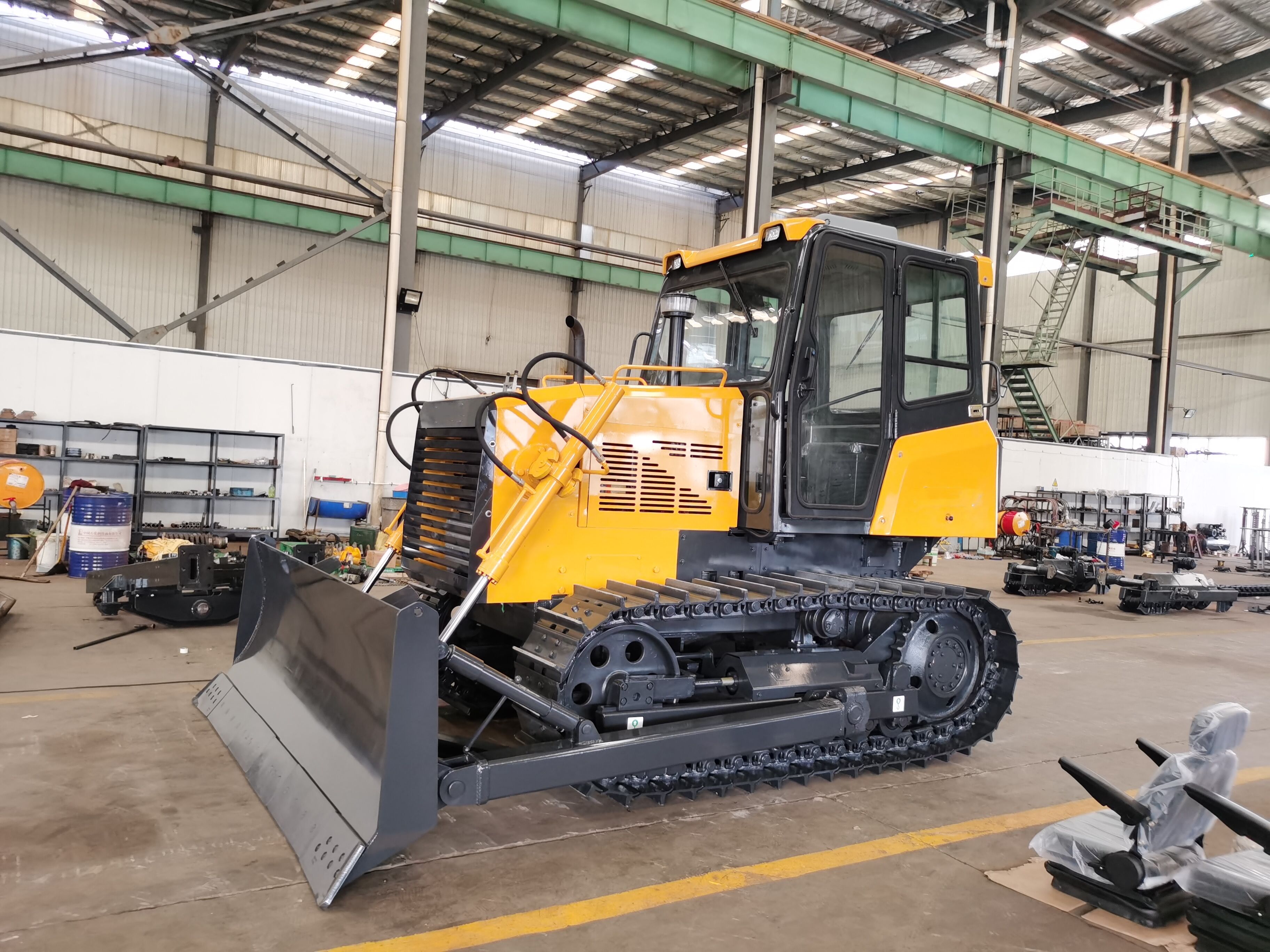
Future Trends in Construction Equipment Parts Technology
IoT Integration for Smart Parts Monitoring
IoT tech is changing how we keep track of parts in construction machinery. Real time data sharing means equipment condition can be monitored constantly, which helps catch problems before they become big issues and keeps operations running smoothly. Industry reports suggest that IoT usage in construction could jump around 20 percent each year going forward, showing just how important it's becoming for companies looking to stay competitive. Of course there are hurdles when bringing IoT into parts management. Security remains a major worry for many firms, plus finding workers who know how to interpret all that data isn't easy either. Some businesses tackle these issues by beefing up their network defenses and sending key personnel through training programs specifically focused on handling IoT generated information. Others partner with tech consultants who specialize in construction automation to bridge the knowledge gap during implementation.
3D Printing Applications for On-Demand Components
The role of 3D printing in making on demand parts for construction machinery is becoming increasingly important, with real world applications across the industry. With this tech, companies can produce intricate components much faster than traditional methods, sometimes cutting down wait times from weeks down to mere hours. Some research suggests cost savings of around 70 percent when using 3D printing techniques, mainly because there's less material wasted and no need to stockpile large inventories of spare parts. Looking ahead, as these printing technologies keep improving, there's good reason to believe we'll see better options for customizing parts and using more sustainable materials. Many experts think 3D printing might eventually become a standard practice rather than an occasional solution in construction equipment manufacturing circles.
Autonomous Systems and Self-Diagnosing Parts
Construction machinery is getting smarter thanks to improvements in autonomous systems that can spot problems before breakdowns happen. These diagnostic capabilities help cut down on unexpected downtime when machines stop working mid-job. What makes these systems so valuable? They extend how long equipment lasts, save money on repairs, and most importantly keep workers safe from sudden failures. Looking ahead, we're seeing more builders adopt AI technologies alongside their existing automation. The combination promises better performing machines across job sites, though exactly how much smarter remains to be seen as companies test different implementations in real world conditions.
Optimizing Parts Lifecycle for Sustainable Operations
Recycling and Remanufacturing Strategies for Components
Recycling and remanufacturing play a big role in making construction operations more sustainable. When companies put these practices into action, they cut down on waste while saving precious natural resources. Take bulldozers and excavators for instance. Instead of tossing out worn parts, many firms now recycle them, getting those materials right back into the manufacturing process so fewer virgin resources get used. The Construction Equipment Association did some research showing just how effective this is. Their findings suggest that using recycled components instead of brand new ones can slash carbon dioxide emissions by around 30 percent. That kind of reduction makes a real difference in an industry known for its environmental impact.
Companies wanting to put these ideas into action should start looking at what works best for their operations. Most businesses find success when they create proper recycling systems, spend money on technology that allows old parts to be rebuilt, and make sure employees know exactly how to deal with waste materials. Take construction firms for instance many have started working directly with specialized recyclers who deal specifically with big machinery components. These recyclers handle everything from motor graders down to those massive wheel loader parts, making sure nothing gets thrown away improperly. The bottom line is straightforward recycling saves money while meeting customer expectations around green business practices something that has become absolutely essential across most industries today.
Operator Training for Parts Preservation Techniques
Good training for equipment operators makes a real difference in how long construction machinery lasts and how efficiently it works. When operators know how to take care of different parts, especially on big machines like front end loaders or road rollers, those components tend to last much longer than they otherwise would. Studies indicate that properly trained staff can actually get about 25% more life out of these parts before needing replacement. This means fewer parts going through the bin, which saves money and materials over time. Companies that invest in proper training programs often find themselves spending less on repairs while getting better performance from their fleet.
Training operators properly when it comes to parts care means putting them through solid courses that cover all sorts of maintenance techniques. Regular checkups on how well operators are doing their job should be part of the routine too. And let's not forget about those telematics systems that track how machines get used over time. When workers know exactly what they're supposed to do with something like a compact excavator, there's less chance of accidental damage happening. That means longer lasting parts and way fewer times when machines just stop working because someone messed up. These kinds of training programs do more than just keep parts running longer though. They actually help businesses run greener operations since machines spend less time sitting idle in the shop waiting for repairs. Plus, everyone gets better at managing resources efficiently across the board.
Conclusion
Construction equipment parts play a vital role in ensuring the operational efficiency, safety, and longevity of machinery on job sites. By maintaining high-quality components and replacing worn or damaged parts promptly, construction companies can minimize downtime, reduce repair costs, and enhance overall productivity.
Shanbo has become pretty important in the construction equipment world over the years. The company's latest designs actually make machines such as excavators, bulldozers, and those big wheel loaders work better while still being kinder to the environment. With a solid reputation in the market, Shanbo isn't just resting on its laurels. Management talks about expanding their range of products, especially focusing on making their machinery even more efficient for customers who care about both performance and sustainability.
Recommended Products
 Hot News
Hot News
-
“Water Savior” 200 m Reverse Circulation Water Well Drills Arrive in Uzbekistan
2025-03-28
-
Bulldozer Transport Guide: Best Practices, Safety Tips, and Cost Factors
2025-12-15
-
A Complete Guide to Construction Equipment Shipping: Methods, Costs, and Tips
2025-12-12
-
How Bulldozer Work Gets Done: Key Tasks, Techniques, and Applications
2025-12-11
-
Exploring the Capabilities of the Biggest Excavator in the World
2025-12-10
-
Essential Bulldozer Equipment: Components, Attachments, and Uses
2025-12-09
